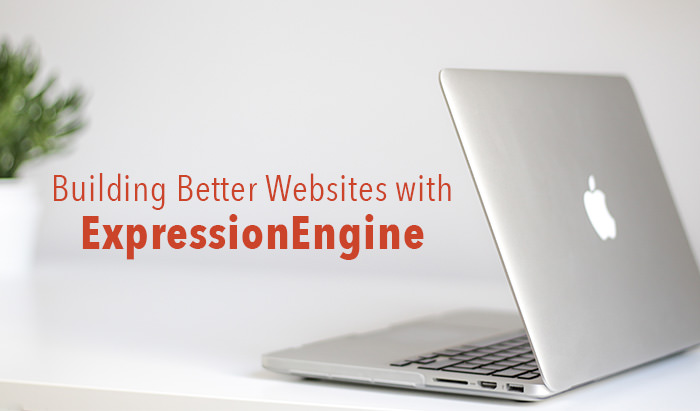Building Better Websites with ExpressionEngine

Good web design functions behind the scenes. Finding a quality content management system (CMS) is the first step in creating a user-friendly site experience. Here at Papercut, we use ExpressionEngine (EE) to bring designs to life and meet our clients’ marketing goals.
What makes ExpressionEngine our choice for developers and end users? Here are a few of our favorite features that can help you enhance your web strategy and meet your business goals:
Design Freedom
ExpressionEngine gives web designers freedom through the flexibility it offers. Popular CMS programs like WordPress only provide one content editing block (also called a WYSIWYG) per page. This dramatically limits both designers, developers, and users.
With ExpressionEngine, developers can add several editable areas on the page. We can create various templates to match the unique needs of our clients, and we can have multiple sources of dynamic data on a single page. For example, on the homepage, you may have several sections featuring various key areas of a site. In the backend, we can create a grid for each section to group these elements together, making it easy for you to edit this content. We can even add instructions for each field, like recommended image sizes and video embed guidelines, so you have best practices right at your fingertips as you’re working.
The relationships field is a handy tool that pulls in data from specified entries. Your site may also have a blog or news section, and the most recent posts can be featured on the homepage with an image, title, intro text, and a link to the full post. This is easy for us to implement with ExpressionEngine’s templating language.
Plug-ins, Fields, and Extensions, Oh My!
The sky is just about the limit when it comes to customization in ExpressionEngine, meaning we can add the specific functionality your organization needs to meet its goals online. This is done through channels, categories, and the templating language. Modules can also be used extend EE’s capabilities. ExpressionEngine has a selection of built-in features and modules, but if these can’t do what you need, we can work with you to create a custom extension.
SEO Enhancements
Of course, if you’re going to reach your audience online, you need to be sure that your site is optimized for search engines. ExpressionEngine can help you with that, too. As we build websites, we add a separate tab in the page editor for SEO. It contains all the fields needed to optimize a page for target keywords in its title and description. As a site user, you can easily make sure your pages are SEO friendly by filling in these fields before publishing new content.
EE also has a really cool “layout” function. With a little extra tagging and coding from us, EE will make sure that the information you added in the SEO fields is automatically placed in the header of the page, right where it belongs for search engine optimization purposes!
It’s easy for us to optimize your website’s URL structure through template groups. These groups automatically manage the content on subpages associated with them. For example, a blog would have a listing page at yoursite.com/blog, and then all of the entries would be at yoursite.com/blog/entry/your-post. The resulting URL structure is clean, automatic, and friendly for both users and search engines. Template groups can be used for product listings, case studies, events, galleries, news articles, search pages, or whatever your need is.
Want to Know More?
We love ExpressionEngine for its flexibility and ease of use. If you’re interested in upgrading your website and would like to know more about how Papercut can make EE work for you, let’s talk!
